ME(me)morial: Kaepernick
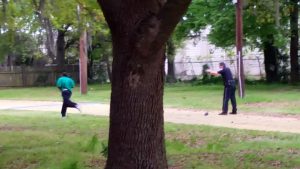
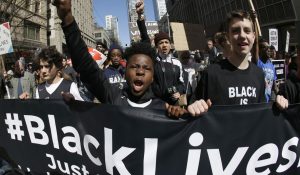
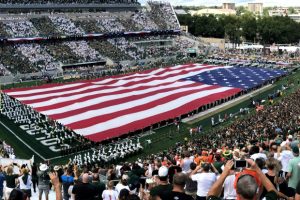
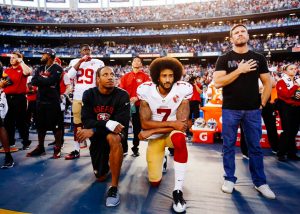

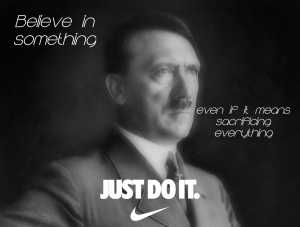


COLIN KAEPERNICK: Paradigm
MEmorial is a genre associated with konsult, whose purpose is to supplement conventional monumentality with a form native to the distributed collective identity of electracy. MEmorial commemorations support political and ethical formation of a fifth estate emerging within social media and entertainment corporate institutions. The event scenario developing around Colin Kaepernick manifests all the features of the genre, including making explicit the meme in MEmorial. This list inventories the unfolding of this case, which may be generalized as exemplary, replicable in principle, adopted as a relay for individual use.
- The Event for konsult is not located in any one incident, but emerges chorally in the coherence of the unfolding series. The motivating context is the existence of a disaster: the immediate symptom is the recurring incidents in which police kill Black citizens during interventions in traffic stops or other routine activities. The larger disaster opens out onto the social aporias of race, poverty, and the like.
- The symptom incidents provoked activists to form #Blacklivesmatter, a social movement facilitated by canny exploitation of social media as well as more conventional protest actions.
- A feeling of Injustice is the Call that initiates konsult as such. NFL quarterback Colin Kaepernick, an African-American, experiencing a profound feeling of injustice, created and performed a MEmorial (in our terms). MEmorials commemorate an Abject Sacrifice, that is, a sacrifice on behalf of a community value that is not acknowledged as such, not recognized as a loss justified within the culture by some value held to be worth the sacrifice. The abject sacrifice is promoted by the MEmorial from the liminal condition of one-at-a-time accidents, to a collective cumulative totality, representing the cost of preserving the value. The Vietnam Wall acknowledges that the 58,000+ lives lost in that war constitute a worthy sacrifice for the interests of the nation. MEmorials attach or associate themselves as peripherals to these recognized monuments in order to communicate their function, recognizing the abject (denigrated) loss as itself the collective cost of a value. The point is not to accept this loss, but to make explicit what is at stake in the on-going disaster.
- Kaepernick created a peripheral performance by kneeling during the playing of the National Anthem at the beginning of a game, violating the convention which is to stand to show respect for the Flag. The Anthem Ritual is the recognized monument. The action constitutes one bit of information (stand/kneel). From the point of view of konsult this was a brilliant design. The effect was enormous, due to the central place of professional sports in general, and the NFL in particular, in the public sphere of electrate society. Other athletes followed Kaepernick’s example, and the issue drew involvement of politicians, including President Trump who condemned the protests. Kaepernick became a free agent, and despite his proven abilities, was not hired by any team (he was blackballed, a term to which he gives new meaning).
- Enter Nike corporation with a major investment in the institution of sports at all levels, as part of its brand identity, to outfit teams with shoes and apparel, and through this display sell also to the general public. Nike signed Kaepernick to a lucrative contract to represent their Just Do It advertising campaign. The ad design evokes the traditional cultural value that considers athletic competition to be an important factor in the formation of character translatable to all areas of life (“The battle of Waterloo was won on the playing fields of Eton,” to cite a saying from English history). Part of what makes this event paradigmatic is that it involves precisely this corporate entertainment register of the apparatus (the corporation is to electracy what school is to literacy or church to orality).
- The ad campaign sparked protests as well as support. Images circulated on social media of people offended by the flag protest burning or defacing Nike products.
- The emblem design of the ad lent itself to replication, generating memes, the image-text genre central to the fifth estate public sphere. The richness of the event as a whole is measured by the multiplicity of social-political-economic-ethical themes packed into this scenario.

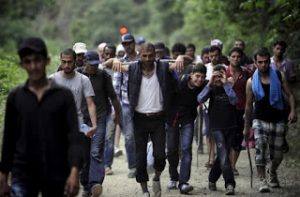 Conduction (the fourth inference) is visceral. The image logic (reasoneon) we are developing as Gest suffers fallacies just as does the reasoning of abduction, deduction, and induction. Physiognomic inference operates in the type-casting of cinema, exploiting the same emblematics as racism, as in Nazi propaganda. This danger is a reminder that electrate rhetoric articulates the visceral dimension of intelligence (racists are physically repulsed by miscegenation, for example). This effect of concrete logic should not be denied or euphemized, but addressed as a resource in understanding the thymotic force operating in personal and public discourse.
Conduction (the fourth inference) is visceral. The image logic (reasoneon) we are developing as Gest suffers fallacies just as does the reasoning of abduction, deduction, and induction. Physiognomic inference operates in the type-casting of cinema, exploiting the same emblematics as racism, as in Nazi propaganda. This danger is a reminder that electrate rhetoric articulates the visceral dimension of intelligence (racists are physically repulsed by miscegenation, for example). This effect of concrete logic should not be denied or euphemized, but addressed as a resource in understanding the thymotic force operating in personal and public discourse.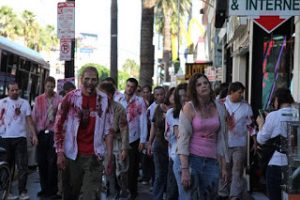 The existence of polysemous meaning has been noted throughout history–the repetition of patterns, the isotopies relating the different registers of the semiosphere (Lotman). Learning how to read these patterns is part of theopraxesis, since in the condition of the General Accident (that happens everywhere simultaneously [Virillio]) judgment and decision must be capable of registering macrocosm from details. That recognition of patterns does not dictate interpretation directly, to which may be added the Casandra effect. One of the better known examples of anticipation of disaster is the novel Futility, or The Wreck of the Titan, the 1898 novel by Morgan Robertson that foretold (in retrospect) the sinking of the Titanic (1912).
The existence of polysemous meaning has been noted throughout history–the repetition of patterns, the isotopies relating the different registers of the semiosphere (Lotman). Learning how to read these patterns is part of theopraxesis, since in the condition of the General Accident (that happens everywhere simultaneously [Virillio]) judgment and decision must be capable of registering macrocosm from details. That recognition of patterns does not dictate interpretation directly, to which may be added the Casandra effect. One of the better known examples of anticipation of disaster is the novel Futility, or The Wreck of the Titan, the 1898 novel by Morgan Robertson that foretold (in retrospect) the sinking of the Titanic (1912).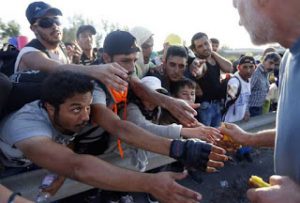
 Many reports indicate that many millions of people will be displaced by these conditions globally. The present crisis is advanced warning of what is to come on a much larger scale. What policy response is in keeping with the imperative of well-being against disaster? The Zombie scenario warns of total war. Philosophers such as Jacques Derrida urge the self-described impossibility of Hospitality. It is important to note that left theory long ago identified our horror motifs as icons and emblems of life under Capitalism. Politics in any case concerns the just allocation of finite resources. The General Accident of climate change demands a holistic response.
Many reports indicate that many millions of people will be displaced by these conditions globally. The present crisis is advanced warning of what is to come on a much larger scale. What policy response is in keeping with the imperative of well-being against disaster? The Zombie scenario warns of total war. Philosophers such as Jacques Derrida urge the self-described impossibility of Hospitality. It is important to note that left theory long ago identified our horror motifs as icons and emblems of life under Capitalism. Politics in any case concerns the just allocation of finite resources. The General Accident of climate change demands a holistic response. Event Gest.
Event Gest. 

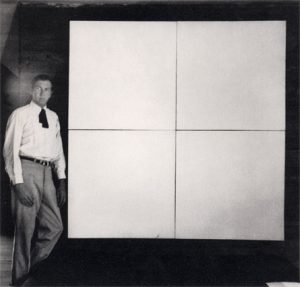 But not yet have we solved the incantation of this whiteness, and learned why it appeals with such power to the soul; and more strange and far more portentous–why, as we have seen, it is at once the most meaning symbol of spiritual things, nay, the very veil of the Christian’s Deity; and yet should be as it is, the intensifying agent in things the most appalling to mankind.
But not yet have we solved the incantation of this whiteness, and learned why it appeals with such power to the soul; and more strange and far more portentous–why, as we have seen, it is at once the most meaning symbol of spiritual things, nay, the very veil of the Christian’s Deity; and yet should be as it is, the intensifying agent in things the most appalling to mankind. Our first memories are visual ones. In memory life becomes a silent film. We all have in our minds an image which is the first, or one of the first, in our lives. That image is a sign, or to be exact, a linguistic sign. So if it is a linguistic sign it communicates or expresses something. I shall give you an example. The first image of my life is a white, transparent bind, which hangs–without moving, I believe–from a window which looks out on to a somewhat sad and dark lane. That blind terrifies me and fills me with anguish: not as something threatening and unpleasant but as something cosmic. In that blind the spirit of the middle-class house in Bologna where I was born is summed up and takes bodily form. Indeed the images which compete with the blind for chronological primacy are a room with an alcove (where my grandmother slept), heavy “proper” furniture, a carriage in the street which I wanted to climb into. These images are less painful than that of the blind, yet in them too there is concentrated that element of the cosmic which constitutes the petty bourgeois spirit of the world into which I was born. But if in the objects and things the images which have remained firmly in my memory (like those of an indelible dream) there is precipitated and concentrated the whole world of “memories,” which is recalled by those images in a single instant– if, that is to say, those object and those things are containers in which is stored a universe which I can extract and look at, then, at the same time, these objects and things are also something other than a container. . . . So their communication was essentially instructional. They taught me where I had been born, in what world I lived, and above all how to think about my birth and my life. Since it was a question of an unarticulated, fixed and incontrovertible pedagogic discourse, it could not be other–as we say today–than authoritarian and repressive. What that blind said to me and taught me did not admit (and does not admit) of rejoinders. No dialogue was possible or admissible with it, nor any act of self-education. That is why I believed that the whole world was the world which that blind taught me: that is to say, I thought that the whole world was “proper,” idealistic, sad and skeptical, a little vulgar–in short, petty bourgeois. (Pier Paolo Pasolini, Lutheran Letters, trans. Stuart Hood. Carcanet Press: New York, 1987).
Our first memories are visual ones. In memory life becomes a silent film. We all have in our minds an image which is the first, or one of the first, in our lives. That image is a sign, or to be exact, a linguistic sign. So if it is a linguistic sign it communicates or expresses something. I shall give you an example. The first image of my life is a white, transparent bind, which hangs–without moving, I believe–from a window which looks out on to a somewhat sad and dark lane. That blind terrifies me and fills me with anguish: not as something threatening and unpleasant but as something cosmic. In that blind the spirit of the middle-class house in Bologna where I was born is summed up and takes bodily form. Indeed the images which compete with the blind for chronological primacy are a room with an alcove (where my grandmother slept), heavy “proper” furniture, a carriage in the street which I wanted to climb into. These images are less painful than that of the blind, yet in them too there is concentrated that element of the cosmic which constitutes the petty bourgeois spirit of the world into which I was born. But if in the objects and things the images which have remained firmly in my memory (like those of an indelible dream) there is precipitated and concentrated the whole world of “memories,” which is recalled by those images in a single instant– if, that is to say, those object and those things are containers in which is stored a universe which I can extract and look at, then, at the same time, these objects and things are also something other than a container. . . . So their communication was essentially instructional. They taught me where I had been born, in what world I lived, and above all how to think about my birth and my life. Since it was a question of an unarticulated, fixed and incontrovertible pedagogic discourse, it could not be other–as we say today–than authoritarian and repressive. What that blind said to me and taught me did not admit (and does not admit) of rejoinders. No dialogue was possible or admissible with it, nor any act of self-education. That is why I believed that the whole world was the world which that blind taught me: that is to say, I thought that the whole world was “proper,” idealistic, sad and skeptical, a little vulgar–in short, petty bourgeois. (Pier Paolo Pasolini, Lutheran Letters, trans. Stuart Hood. Carcanet Press: New York, 1987).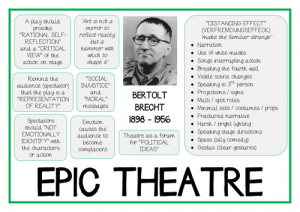 “Gest” is not supposed to mean gesticulation: it is not a matter of explana-tory or emphatic movements of the hands, but of overall attitudes. A language is gestic when it is grounded in a gest and conveys particular attitudes adopted by the speaker towards other men. The sentence “pluck the eye that offends thee out” is less effective from the gestic point of view than “if thine eve offend thee, pluck it out.” The latter starts by pre-senting the eye, and the first clause has the definite gest of making an assumption; the main clause then comes as a surprise, a piece of advice, and a relief.
“Gest” is not supposed to mean gesticulation: it is not a matter of explana-tory or emphatic movements of the hands, but of overall attitudes. A language is gestic when it is grounded in a gest and conveys particular attitudes adopted by the speaker towards other men. The sentence “pluck the eye that offends thee out” is less effective from the gestic point of view than “if thine eve offend thee, pluck it out.” The latter starts by pre-senting the eye, and the first clause has the definite gest of making an assumption; the main clause then comes as a surprise, a piece of advice, and a relief.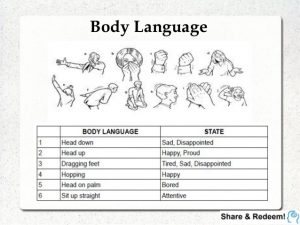 Suppose that the musician composing a cantata on Lenin’s death has to reproduce his own attitude to the class struggle. As far as the gest goes, there are a number of different ways in which the report of Lenin’s death can be set. A certain dignity of presentation means little, since where death is involved this could also be held to be fitting in the case of an enemy. Anger at ‘the blind workings of providence’ cutting short the lives of the best members of the community would not be a communist gest; nor would a wise resignation to “life’s irony”; for the gest of communists mourning a communist is a very special one. The musician’s attitude to his text, the spokesman’s to his report, shows the extent of his political, and so of his human maturity. A man’s stature is shown by what he mourns and in what way he mourns it. To raise mourning to a high plane, to make it into an element of social progress: that is an artistic task.
Suppose that the musician composing a cantata on Lenin’s death has to reproduce his own attitude to the class struggle. As far as the gest goes, there are a number of different ways in which the report of Lenin’s death can be set. A certain dignity of presentation means little, since where death is involved this could also be held to be fitting in the case of an enemy. Anger at ‘the blind workings of providence’ cutting short the lives of the best members of the community would not be a communist gest; nor would a wise resignation to “life’s irony”; for the gest of communists mourning a communist is a very special one. The musician’s attitude to his text, the spokesman’s to his report, shows the extent of his political, and so of his human maturity. A man’s stature is shown by what he mourns and in what way he mourns it. To raise mourning to a high plane, to make it into an element of social progress: that is an artistic task. Here is Existential Positioning (EPS) in experience. How common is it to have an intuition of mortality during childhood? It is as if each person has to realize for him/herself individually what the sages codified in Ancient philosophy as ataraxy. Ataraxy is a state of mind in which the sage, realizing that s/he has no control over external events, decides to reduce her/his own desires. This ascetic view is associated with the stance that “philosophy is learning how to die.” Paradoxically, it may seem, philosophers insist that the realization that everyone dies is liberating. Since death is inevitable, why get so excited over one’s successes and failures in life? Of course, various response to this intuition are possible, such as carpe diem (seize the day).
Here is Existential Positioning (EPS) in experience. How common is it to have an intuition of mortality during childhood? It is as if each person has to realize for him/herself individually what the sages codified in Ancient philosophy as ataraxy. Ataraxy is a state of mind in which the sage, realizing that s/he has no control over external events, decides to reduce her/his own desires. This ascetic view is associated with the stance that “philosophy is learning how to die.” Paradoxically, it may seem, philosophers insist that the realization that everyone dies is liberating. Since death is inevitable, why get so excited over one’s successes and failures in life? Of course, various response to this intuition are possible, such as carpe diem (seize the day). A primal scene? The boy is eleven, starting seventh grade. His father explains that it is time to learn the value of work. He has arranged a job for his son with a friend whose name is Cutting and who owns a sheet metal shop. Every Saturday the boy rides his bicycle across town to Cutting’s Sheet Metal. The employees are done for the week at noon on Saturday. He has to arrive by noon so the boss can lock up, leaving the boy inside (he is too young to be trusted with a key). The job is to clean the shop — sweep the floor, gather up the tools and align them neatly in their designated places on the work benches, collect the remnants and clippings of the metal sheets scattered everywhere. It takes most of the afternoon to finish the chores. The shop is a cavernous open warehouse, with rows of heavy tables, the walls lined with shelves stacked to the distant ceiling with equipment, tools, metals. It is quiet, the stillness of dust motes swirling in the beams of sunlight filtered through the few windows high up near the roof, carving vectors through deep shadow. The sunlight catches the edges of a museum of blades, a taxonomy of every snipping snap slice chop saw hack rend rip cleave nip or severing machine. Half-shaped tin objects stand in rows behind piles of hammers and modelling frames. After so many weeks and months of Saturday noons the boy begins to lose touch with his former friends and companions, who go their separate ways.
A primal scene? The boy is eleven, starting seventh grade. His father explains that it is time to learn the value of work. He has arranged a job for his son with a friend whose name is Cutting and who owns a sheet metal shop. Every Saturday the boy rides his bicycle across town to Cutting’s Sheet Metal. The employees are done for the week at noon on Saturday. He has to arrive by noon so the boss can lock up, leaving the boy inside (he is too young to be trusted with a key). The job is to clean the shop — sweep the floor, gather up the tools and align them neatly in their designated places on the work benches, collect the remnants and clippings of the metal sheets scattered everywhere. It takes most of the afternoon to finish the chores. The shop is a cavernous open warehouse, with rows of heavy tables, the walls lined with shelves stacked to the distant ceiling with equipment, tools, metals. It is quiet, the stillness of dust motes swirling in the beams of sunlight filtered through the few windows high up near the roof, carving vectors through deep shadow. The sunlight catches the edges of a museum of blades, a taxonomy of every snipping snap slice chop saw hack rend rip cleave nip or severing machine. Half-shaped tin objects stand in rows behind piles of hammers and modelling frames. After so many weeks and months of Saturday noons the boy begins to lose touch with his former friends and companions, who go their separate ways. What happens then? The light and shadow of the industrial building open all at once onto a void, a black hole and white wall of divided worlds in this little infinite town: the official world of adults (parents, teachers, coaches, ministers, scout masters) that until then had constituted reality, and the unofficial world of his peers, whose existence he had only just discovered. Two completely different systems of virtue and vice, success and failure, winning and losing, visibility and invisibility, were enforced in these realms: systems Not only different, but opposite and in conflict. What earned admiration and respect in one was inversely judged in the other. He could not have articulated the revelation so abstractly then. The unexpected aspect of this scene is the sense of abandonment, solitary isolation, that overcomes the child, a spilling out or abjection, an absolute exhaling of substance, followed soon after by the inhaled relief of knowing that it doesn’t matter, since everyone and everything dies everywhere the same death.
What happens then? The light and shadow of the industrial building open all at once onto a void, a black hole and white wall of divided worlds in this little infinite town: the official world of adults (parents, teachers, coaches, ministers, scout masters) that until then had constituted reality, and the unofficial world of his peers, whose existence he had only just discovered. Two completely different systems of virtue and vice, success and failure, winning and losing, visibility and invisibility, were enforced in these realms: systems Not only different, but opposite and in conflict. What earned admiration and respect in one was inversely judged in the other. He could not have articulated the revelation so abstractly then. The unexpected aspect of this scene is the sense of abandonment, solitary isolation, that overcomes the child, a spilling out or abjection, an absolute exhaling of substance, followed soon after by the inhaled relief of knowing that it doesn’t matter, since everyone and everything dies everywhere the same death. The method is counterintuitive, in that egents turn away from the historical catastrophe, in order to access their peculiar power. The instructions derived from the text are to compose a figure by juxtaposing a childhood memory with a collective event (a disaster). Blanchot calls this memory a primal scene. It represents an early if not first experience of self-awareness of the human condition – an existential intuition. The corresponding event for Blanchot is the Holocaust.
The method is counterintuitive, in that egents turn away from the historical catastrophe, in order to access their peculiar power. The instructions derived from the text are to compose a figure by juxtaposing a childhood memory with a collective event (a disaster). Blanchot calls this memory a primal scene. It represents an early if not first experience of self-awareness of the human condition – an existential intuition. The corresponding event for Blanchot is the Holocaust. (A primal scene?) You who live later, close to a heart that beats no more, suppose, suppose this: the child – is he seven years old, or eight perhaps? – standing by the window, drawing the curtain and, through the pane, looking. What he sees: the garden, the wintry trees, the wall of a house. Though he sees, no doubt in a child’s way, his play space, he grows weary and slowly looks up toward the ordinary sky, with clouds, grey light – pallid daylight without depth.
(A primal scene?) You who live later, close to a heart that beats no more, suppose, suppose this: the child – is he seven years old, or eight perhaps? – standing by the window, drawing the curtain and, through the pane, looking. What he sees: the garden, the wintry trees, the wall of a house. Though he sees, no doubt in a child’s way, his play space, he grows weary and slowly looks up toward the ordinary sky, with clouds, grey light – pallid daylight without depth.